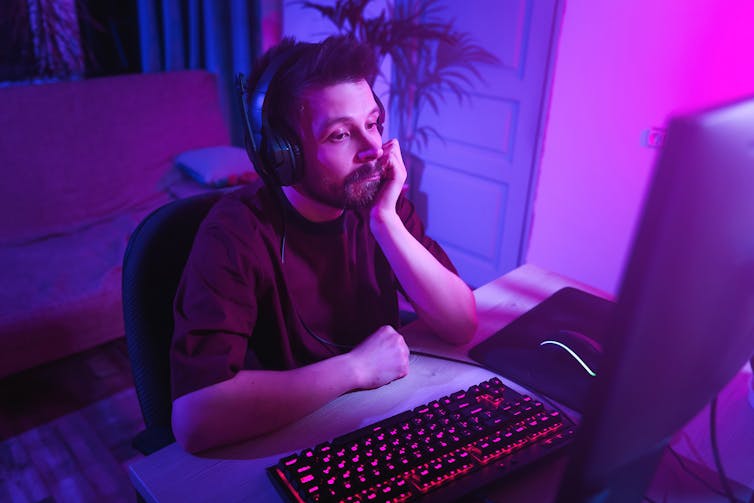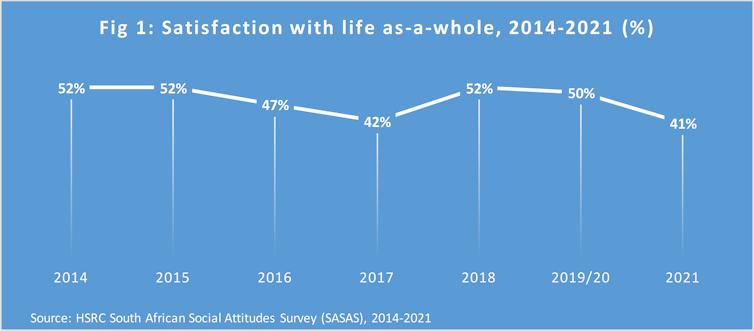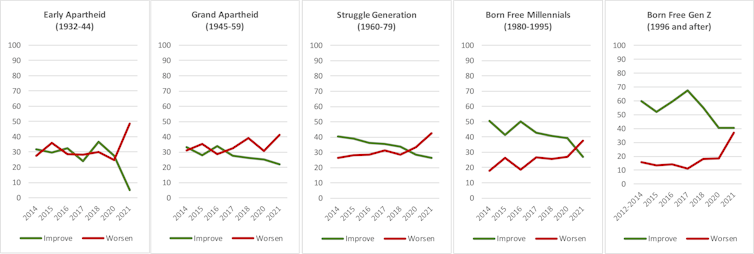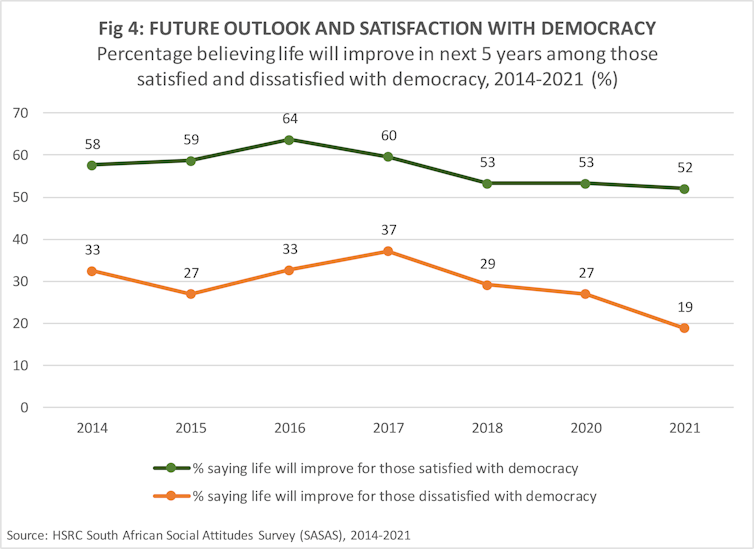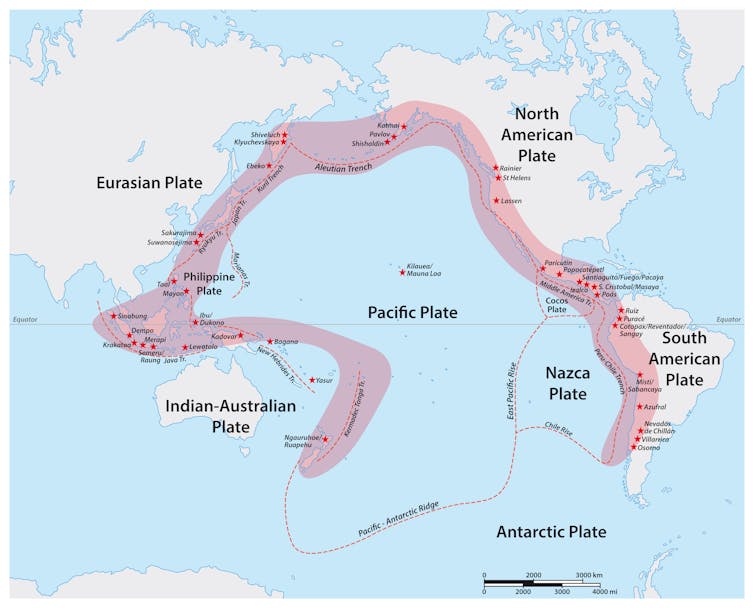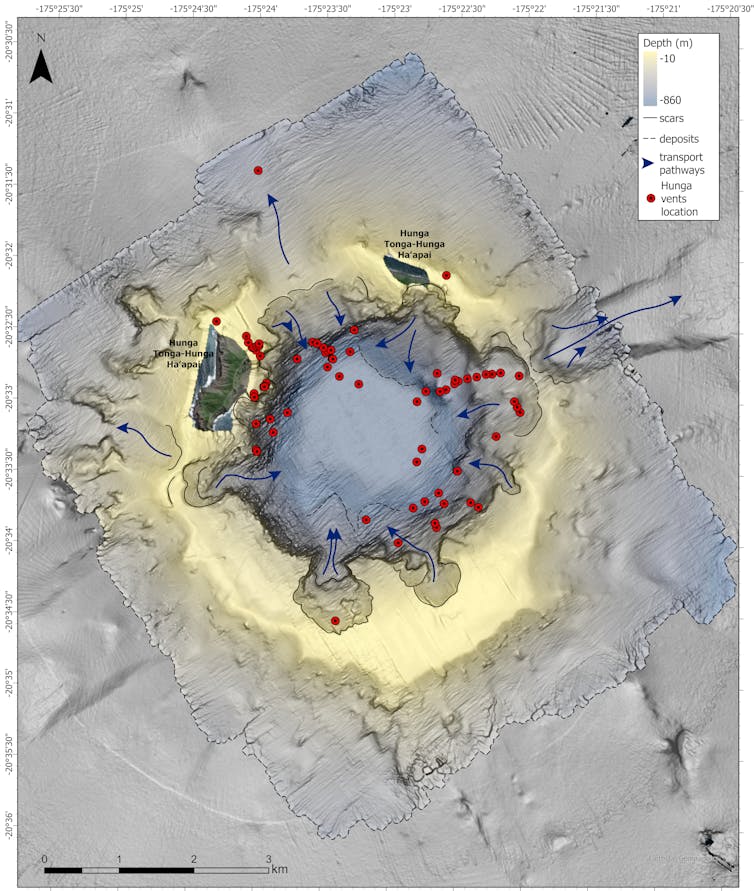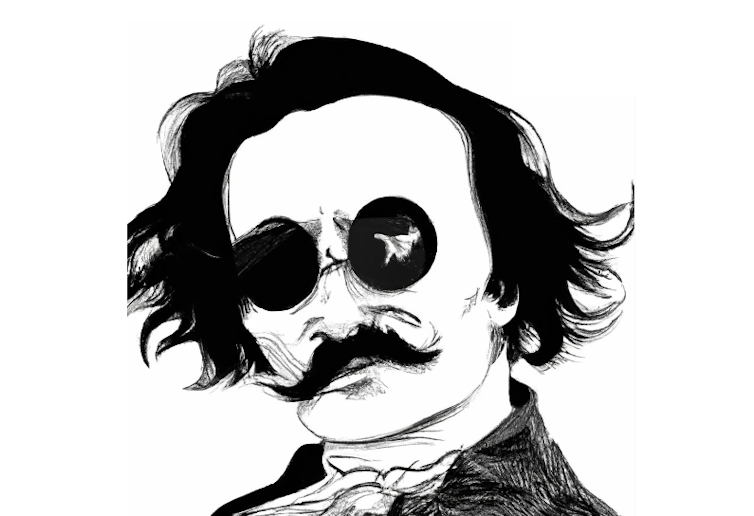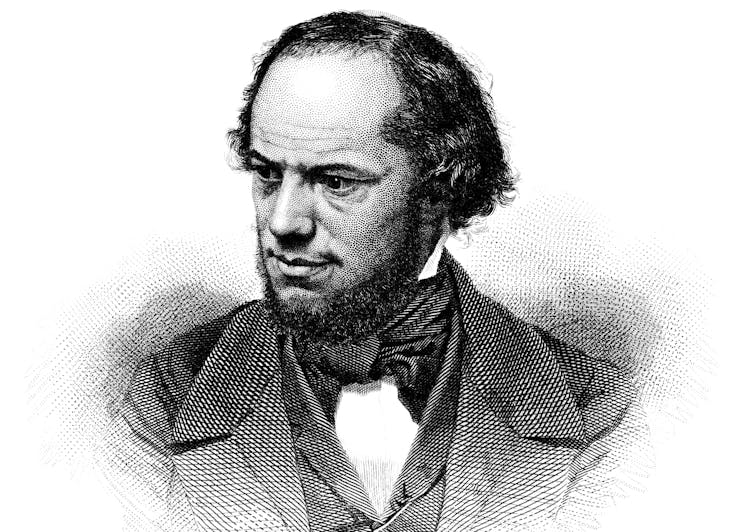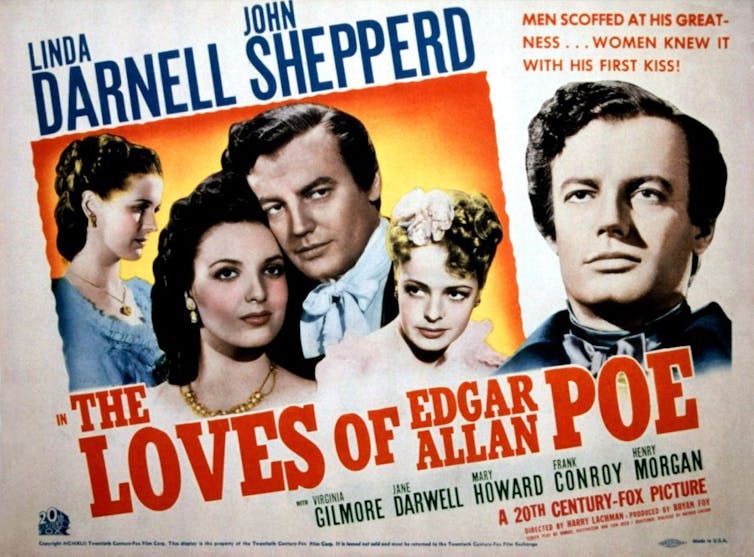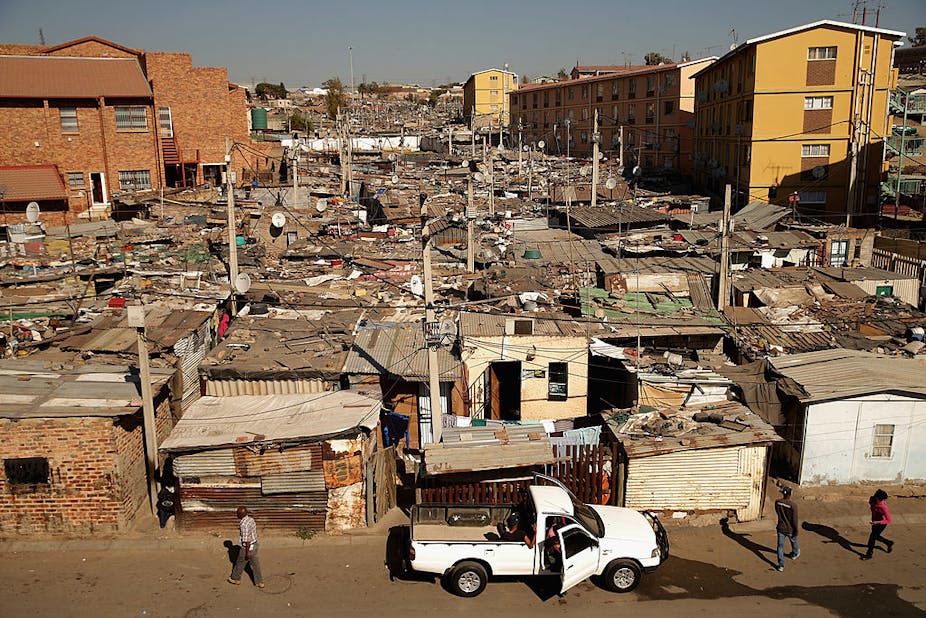
South Africa is ranked one of the most unequal societies in the world. The Conversation Africa spoke to Imraan Valodia, the Director of the Southern Centre for Inequality Studies, University of the Witwatersrand, about inequality in South Africa.
Has income inequality got worse in the last 20 years?
According to the most recent data, South Africa has the highest income inequality in the world, with a Gini coefficient of around 0.67. The Gini coefficient is a widely used statistical measure of how income is distributed in the population of a country. It takes a value between 0 and 1. A coefficient of 1 indicates perfect inequality – where one individual in a country would earn all the income in that country. Conversely, a coefficient of 0 is an indicator of perfect equality, where the income of the country is distributed perfectly equally among all its citizens.
South Africa’s Gini is exceptionally high. A number of other African countries have high Ginis too. For example, Namibia’s is 0.59, Zambia’s 0.57 and Mozambique’s 0.54.
Countries in Europe, especially Scandinavian countries, have much lower Ginis. They range between 0.24 and 0.27. Among the developed countries, the US has a high level of inequality with a Gini of 0.41.
China’s is 0.38 and India’s is 0.35. Russia’s is similarly relatively low at 0.37. Brazil, like South Africa, has a much higher level of inequality at 0.53.
In South Africa, the evidence suggests that income inequality has risen in the post-apartheid period, though it has fluctuated.
What is clear is that levels of inequality are not decreasing.
What’s driving the trend?
There are a number of drivers.
First, the fact that large numbers of South Africans are unemployed and report no or very low incomes. According to the latest Quarterly Labour Force Survey, the rate of unemployment in South Africa, in June 2023, was estimated to be 32.6%. But this doesn’t include people who have given up trying to find work. (The internationally accepted definition of unemployment requires people who are classified as unemployed to be searching for work.) If we include these discouraged workers, the unemployment rate increases to 44.1%.
There are about 40.7 million people in South Africa between the ages of 15 and 64 – this is the group that could potentially work. Those who are not able to work, because they’re at school, or ill, or for some other reason, are estimated to number 13.2 million. That leaves 27.5 million people. Of these, only 16.4 million are working.
Of the 16.4 million, only 11.3 million are employed in the formal sector, where income tends to be higher.
These figures make it clear that the economy is just not able to generate sufficient numbers of employment opportunities.
The second driver is that, among those who are employed, many earn very low wages. Of those who do have work, about 3 million people subsist in the informal economy, where incomes are very low. Another 900,000 people work in agriculture and about 1 million as domestic workers, where incomes are very low.
Even in the formal sector, wages, especially for non-unionised workers, tend to be extremely low.
And third, the incomes at the top end of the income distribution are very high. It’s more difficult to provide reliable statistics on this, because incomes for rich households tend to come from a variety of sources. One way to get a sense of this is to look at household expenditure – a good proxy for incomes. Unfortunately, South Africa’s income and expenditure survey is now quite dated. But what’s available shows that the richest 10% of South African households are responsible for some 52% of all expenditure. The poorest 10% of households contribute only 0.8% of all expenditure.
Is South Africa an outlier?
Yes. However, there are probably many countries that have higher levels of inequality – we just don’t have the data for them. So, while people often say South Africa has the highest Gini in the world, it would be more accurate to say that South Africa has the highest Gini among countries that have data on income inequality.
South Africa’s data is generally very good, reliable and independent.
What steps have been taken? Why didn’t they work?
The major intervention in post-apartheid South Africa was to address inequality in terms of race. This is, of course, extremely important. Among other steps, government introduced the Employment Equity Act to address race-based discrimination in employment, and various measures to address ownership by race. There is controversy about some of the measures. Nevertheless, evidence suggests that they have been very successful in changing the patterns of inequality in South Africa.
However, not enough has been done – race-based inequality is still a real problem. In general, high income South African households, irrespective of race, have done well over the last three decades, which is why inequality has remained stubbornly high.
What steps should be taken now?
I don’t think there is any one policy that would address the issue. Some focus on the labour market and argue that employment is not growing because of labour protections. But I think this is incorrect and does not deal with the nuance of the country’s political and economic situation.
I think we should rather be thinking about how to direct the benefits of economic growth and redistribution policies to benefit those at the bottom end. This could involve, for example, raising incomes at the bottom, creating new opportunities and employment for those who don’t have them, and ensuring that the benefits of growth do not disproportionately benefit those at the top end of the income distribution.
What is the difference between income inequality and wealth inequality?
Income inequality measures only a portion of the real inequality in South Africa. Measuring inequality in wealth gives a more complete picture of how unequal a society is. Income is only one factor that determines wealth. Wealth also includes inheritance, earnings from assets and so on.
The broad picture is that in South Africa wealth inequality is much worse than income inequality. Some striking statistics are that the top 0.01% of people – just 3,500 individuals – own about 15% of all of the wealth in South Africa. The top 0.1% own 25% of the wealth. The net wealth of the top 1% is R17.8 million (about US$944,000). In contrast, the bottom 50% have a negative wealth position (they have more liabilities than they do assets) of R16,000 (around US$850).
This article is part of a media partnership between Wits University’s Southern Centre for Inequality Studies and The Conversation Africa for the Annual Inequality Lecture which will be given by Professor Branko Milanovic, titled “Recent changes in the global income distribution and their political implications”. You can register for the event here.![]()
Imraan Valodia, Pro Vice-Chancellor: Climate, Sustainability and Inequality and Director Southern Centre for Inequality Studies., University of the Witwatersrand
This article is republished from The Conversation under a Creative Commons license.

